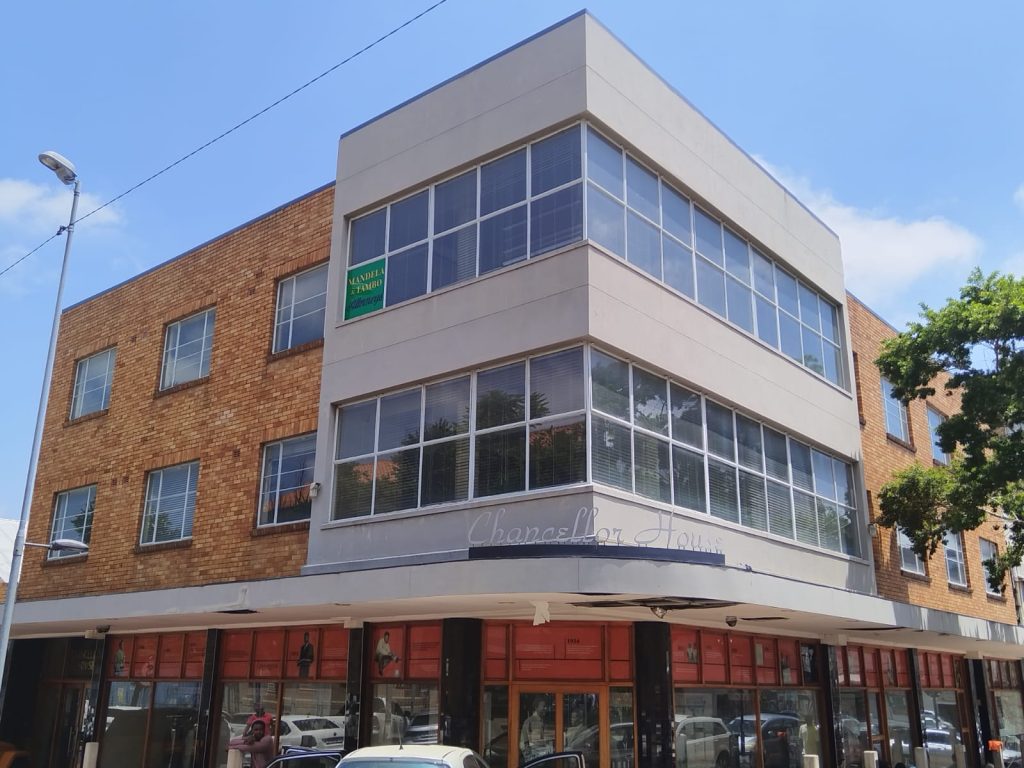The house of Mr J D Smith is a standard match-box house with roofing of iron zink. The house is painted with peach colour. The roofing of the house is made of metal iron zinc. The house is fenced with a first brick wall topped with palisade fencing. At the backyard, there is a small storeroom and double garage.
Mid-Ennerdale Primary school situated a short distance from the J.D. Smith House, at 2nd avenue, md-Ennerdale. The school has several large school blocks separated from each other, used as classrooms, with one of the buildings being used for administration and staff-rooms.
A bust honouring Mr J.D. Smith is displayed at the School.
Ennerdale as a residential area was first established in 1940 by Freddie Jacobus Smith who hailed from Graaf Reinet in the Eastern Cape. Mr F.J. Smith identified Ennerdale as a place suitable for him and his family. Later, other families came to join him and established themselves around Ennerdale erecting homes from zinc. Over the years, Ennerdale has seen large amount of development since its formation. More houses are developed as compared to old houses of Ennerdale with new architectural trends. This has brought value to the properties of Ennerdale. Ennerdale has grown and expanded over the years due to its increase in population.
Back in 1941, the lack of a school for children in Ennerdale was a cause for much concern and sleepless nights for parents. A group of public-spirited and committed residents like, Mr J D Smith, Mr Dixon, Mrs L Prince and Miss A Smith then approached the then West Rand Education Department with the request to have a school established in Ennerdale, or “Grassie” as it was known back in the day.
The group were told by the Education Department that a school could only be established once there were forty pupils to attend. This presented the community with a predicament as there were too few children to comply with this minimum requirement. However, this hurdle was not going to dampen the determination of the community to have a place of learning for their children.
After persistent efforts, Mrs Louisa Prince, was granted permission to start a “private school” until such time as the necessary quota of forty children was achieved. Faced with a shortage of qualified teachers, the school was nevertheless, started in February 1942, with the volunteer services of Mrs Louisa Prince and Miss Anne Smith.
Mr. J D Smith provided the veranda of his house which was used as a makeshift classroom and on rainy days, his living room was used as a classroom. The first fifteen pupils were spread over spread over different grades, ranging from Grade 1 to Standard 3 classes. The teachers were responsible for the tuition of the pupils and the Education Department was responsible for setting the end-of-the-year examination as well as the marking of the examination scripts, after which progress reports were issued.
The strain on the school necessitated Mrs Louisa Prince and Mrs Strachan to approach the Education Department to assist them with two additional qualified teachers. The authorities agreed to this request and to more teachers were appointed, Mr Pitt and Mrs Irene Pop. By this time the school enrolment exceeded forty pupils.
Turning to the early history of Mid-Ennerdale Primary School, its first structure was completed in 1958. During this time, the school was able to accommodate learners up to standard six which is now referred to as grade 8. The school had the first principal in 1968 by the name of Mr Fredericks L Norman. During his leadership, new concrete building was added to extend the existing classrooms in 1968. The principal joined by Mr Coetzee (then Inspector of Education) officially opened the school. Thereafter, the school experienced growth.
In 1980, the school was named Mid-Ennerdale Primary School, and has since accommodated all substandard classes up to standard 4. In 1980 Mr Albert Allie was appointed as a principal of Mid-Ennerdale Primary School. At that time, the school had enrolled approximately 929 learners. In 1991, a budget 3.5 million Rands was allocated by the department of Education to rebuild Mid-Ennerdale Primary School. After the construction, the school hosted a ceremony to mark the beginning of a new era of Mid-Ennerdale Primary School. The school has grown over the years up until now. The school now has approximately 1949 learners. The school is led by Mr. Coetzee as principal and Mrs. G. Maloyi as deputy principal. Moreover, the school has 51 educators, 4 officer administrators and 5 general workers.
General Protection: Section 34 (1) Structures under the National Heritage Resources Act (NHRA), 1999.

A culmination of research gathered over many years, the Online Johannesburg Heritage Register is being launched on Nelson Mandela Day 18 July 2025.
Among the many heritage sites featured is Chancellor House, the downtown offices of Mandela and Tambo Attorneys in the 1950s. After having been vacant and shuttered for more than a decade, this iconic building is being revived and brought to life once again as offices for the Community Development Department, which oversees the City’s Arts, Culture & Heritage Services.